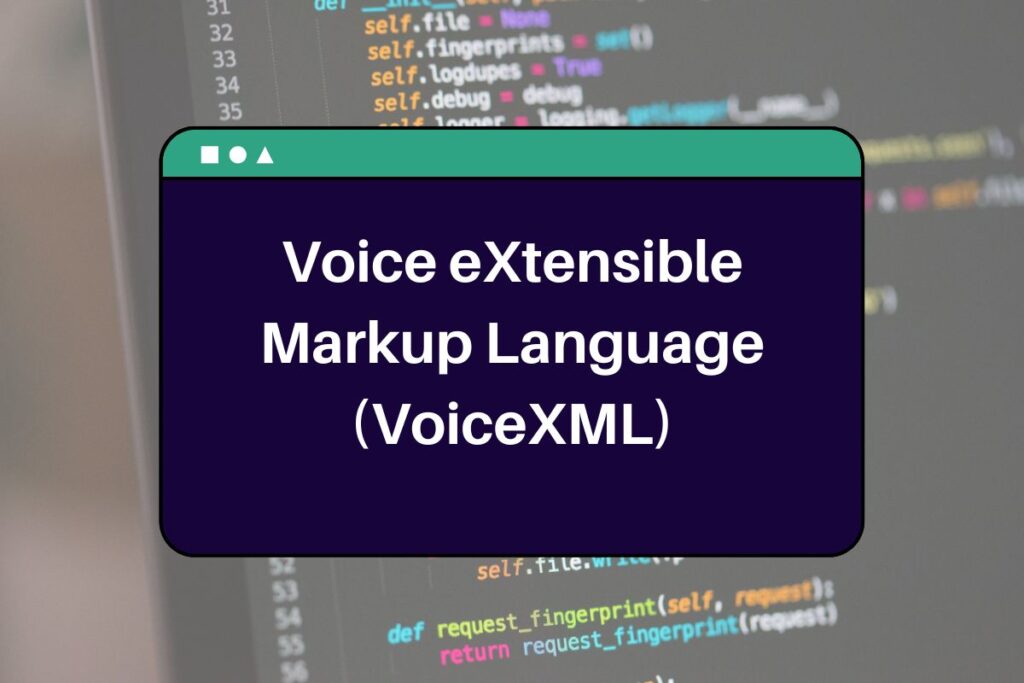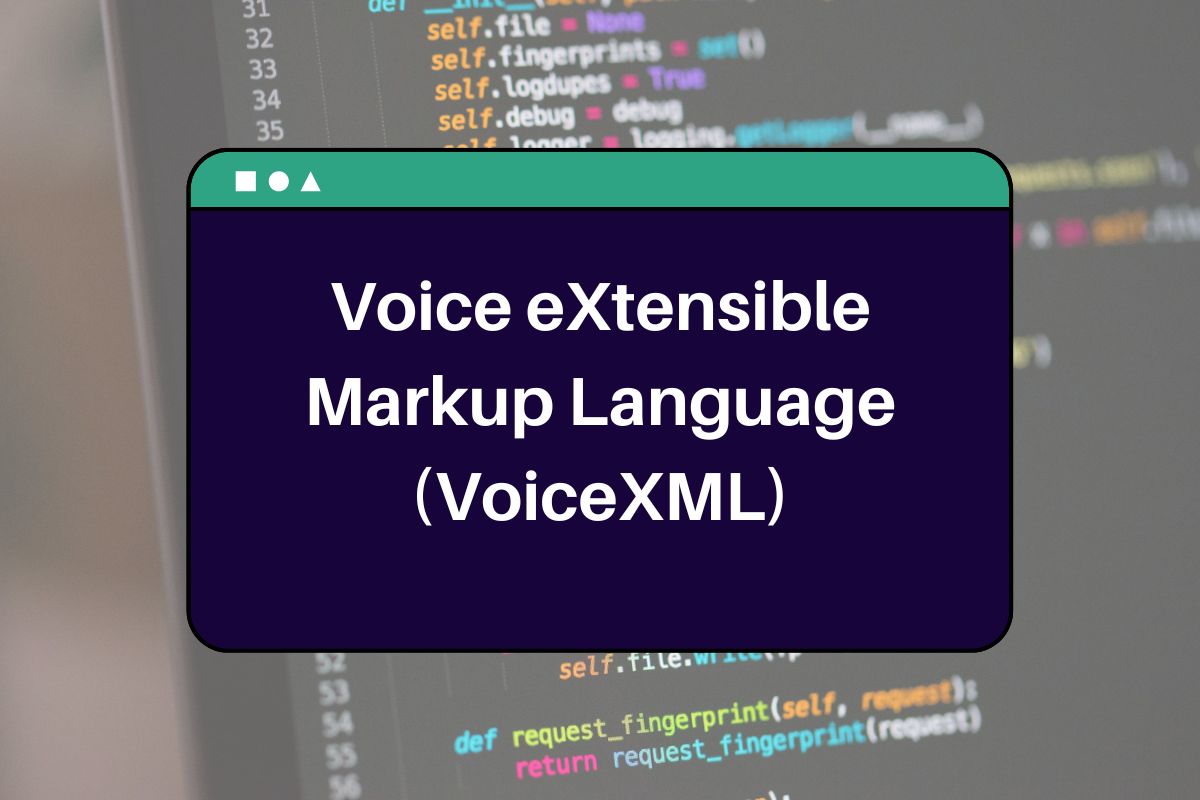Phone calls often have a mysterious voice delivering an informative message. Though very few of us listen to it carefully, it is created by Voice eXtensible Markup Language (VoiceXML). This language is used to create interactive voice applications.
XML syntax is used for designing features such as speech recognition, keypad input, and text-to-speech. VoiceXML is most widely used to build various voice-enabled applications.
Voice eXtensible Markup Language
The phone-based interfaces allow users to interact with such automated voices. Have you ever communicated with a company’s bot? You have to put in a query, and then the details are displayed on the screen.
This happens because of the VoiceXML. This programming language creates a structure in which the dialogue between a computer and a human becomes easy. This ensures that even complex information is shared within these systems.
Speech recognition has become vital for many businesses, companies, individuals, and groups due to its ease of access. This emerged in the late 1990s through a collaboration of the top IT companies, namely AT&T, IBM, Lucent Technologies, and Motorola. These IT companies dwell on innovations and the development of advanced technologies.
This article will be a comprehensive guide for Voice eXtensible Markup Language, its working, advantages, and more.
Voice eXtensible Markup Language Overview
| Article On | Voice eXtensible Markup Language (VoiceXML) |
| Category | Information Technology |
| Programming Language | Voice eXtensible Markup Language |
| Foundation | IVR Systems |
| Popularity | More than 11% of Americans make use of a voice search |
| Purpose of VoiceXML | To develop an interactive voice response system |
Why are IVR Systems Developed?
The primary goal of IVR systems was to bring platform independence, meaning that users can use their voice to search for something on the web. They do not need to wait for customer support to respond to the queries.
IVR systems have not only opened vast technological advancements but have also created a competitive environment with other technologies across the globe. But these systems are reliant on VoiceXML, which is a standard markup language to build and deploy voice-based applications.

What is the Purpose of VoiceXML?
When the IVR systems initially started, the purpose was to create sophisticated systems that could help people. The developers faced several challenges, such as costs, testing, voice code implementation, and many more. The demand to make the systems (hardware) vendor-specific was critical. Because each vendor has their business requirements.
The limited interoperability created complex situations for the developers of the IVR systems. It involves the development of proprietary scripting languages and code. Now, the popularity of VoiceXML is expected to increase in 2025, which will be around 8.4 billion voice assistants.
How VoiceXML Works?
Having understood the basics of VoiceXML, you might be curious to know about its working. The applications are made to run on an interpreter that is also a browser or a specialized IVR platform. Nowadays, a user can find almost all platforms to be VoiceXML-friendly due to certain technological advancements.
The work begins with a specific user query in a VoiceXML application. The browser then sends the message to the documents and fetches the interpretation. This is generally an HTML page. This page comprises short codes and a well-defined structure to provide the necessary information.
The work of the interpreter begins from this step. It translates the markup languages into understandable and audible prompts that resolve the user’s query. The interpreters convert the output from the user’s speech or DTMF input.
Core Functions of Voice XML
There is a form that comprises various fields in which each information from the user is placed. For example, a form might have fields such as login ID and password, including a specific action such as “SIGN IN”. Let’s understand the flow of Voice XML:
- The initial message. The users are welcomed with a greeting.
- There is a prompt section in which the user has to provide a valid query.
- Automatic Speech Recognition is used to convert speech to text.
- The user input is validated according to the defined rules.
- The processing begins when the data is sent to the backend.
- The response is shared with the user through the conversion of text-to-speech.
This is the overview of the technical flow of VoiceXML working. This is shared in an easy-to-understand language so that learners can get the basic idea about it.
Key Elements of VoiceXML
These help in delivering an interactive voice response. The elements control user input and manage the message between applications and external systems (the user’s computer or phone device).
| Key Element | Details |
| <vxml> | root element |
| <var> | Declaration of a variable |
| <form> | Represents a single dialogue state or a collection of fields to be filled. |
| <field> | Defines user input, which can be speech or DTMF |
| <prompt> | Audio files in the case of IVR systems |
| <menu> | List of Choices |
| <submit> | Collected Data |
| <block> | Used to generate dynamic prompts |
| <grammar> | defines the vocabulary and phrases |
| <goto> | Used for navigation |
Many more key elements are effective for VoiceXML, but we have mentioned the most commonly used ones.
What are the Advantages of VoiceXML?
An in-depth understanding of VoiceXML has been mentioned in the previous sections of the article. But it is essential to know the benefits as well. These are:
- VoiceXML promotes faster application development.
- The feature of interoperability ensures that the applications built on VoiceXML run on various platforms easily.
- The applications that are built with Voice XML can be easily integrated with standard web protocols.
- The developers can maintain the applications because of their sophisticated structure.
- Last but not least, VoiceXML applications are easily accessible.
With several advantages, there is a limitation of conversational flows, which requires knowledgeable personnel who have a strong understanding of the backend logic. Though the dialogues are natural and free form, the new versions will require better functionality.
In conclusion, VoiceXML is crucial for Conversational AI platforms, NLU engines, and cloud-based services, which are mainly for speech. The foundation was with IVR systems, but now VoiceXML has been transformed into various forms. Through voice search, users can conveniently search for queries. They do not have to wonder about grammar or other regulations while browsing the web.
